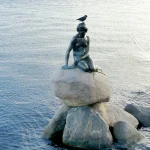
Discovering the Rich Culture and History of Spain: A Journey Through its Vibrant Cities and Scenic Landscapes

Introduction: Why Spain is a Must-Visit Destination for Culture and History Lovers
Spain is a country that is steeped in history and culture, making it a top destination for travelers who are seeking to immerse themselves in the past and present of this fascinating country. From its dynamic cities to its rich history, art, and architecture, Spain offers a wealth of experiences for culture and history lovers.
Exploring the Dynamic Cities of Spain: Madrid, Barcelona, Seville, and More
One of the highlights of visiting Spain is exploring its dynamic cities. Madrid, the capital city, offers a mix of modern and traditional architecture, world-class museums, and vibrant nightlife. Visitors can explore iconic landmarks such as the Royal Palace, Plaza Mayor, and Puerta del Sol. The city is also home to renowned museums like the Prado Museum, which houses an impressive collection of European art.
Barcelona is another must-visit city in Spain. Known for its stunning Gaudi architecture, including the famous Sagrada Familia and Park Guell, Barcelona offers a unique blend of history and modernity. Visitors can also relax on the city’s beautiful beaches or indulge in delicious Catalan cuisine.
Seville is a city steeped in history and culture. Its stunning Gothic cathedral, which houses the tomb of Christopher Columbus, is a must-see attraction. The historic Alcazar is another highlight, with its beautiful gardens and intricate Moorish architecture. Seville is also known for its vibrant flamenco scene and traditional tapas bars.
Discovering Spain’s Fascinating History: From the Romans to the Moors and Beyond
Spain’s history is a tapestry of different cultures and civilizations that have left their mark on the country. From the Romans to the Moors and beyond, Spain has been influenced by various civilizations throughout its history.
The Romans were one of the first civilizations to leave their mark on Spain. They built cities, roads, and aqueducts, many of which can still be seen today. The city of Merida, for example, is home to some of the best-preserved Roman ruins in the country.
The Moors, who ruled Spain for nearly 800 years, also had a significant impact on the country’s history and culture. Their influence can be seen in the architecture of cities like Granada, where the Alhambra Palace is a testament to their architectural prowess.
The Art and Architecture of Spain: Gaudi, Picasso, and Other Icons
Spain is home to some of the world’s most iconic artists and architects. Antoni Gaudi is perhaps the most famous architect associated with Spain. His unique and whimsical designs can be seen throughout Barcelona, including the Sagrada Familia and Casa Batllo.
Pablo Picasso is another iconic artist who was born in Spain. His works can be seen in museums around the world, but visitors to Spain can explore his early works at the Picasso Museum in Barcelona.
Salvador Dali is yet another Spanish artist who has left a lasting impact on the art world. His surrealist works are known for their dreamlike quality and can be seen at the Dali Theatre-Museum in Figueres.
The Culinary Delights of Spain: Tapas, Paella, and More
Spain is known for its delicious food, which reflects its diverse history and culture. Tapas are a popular Spanish culinary tradition that involves small plates of food that are meant to be shared. From traditional favorites like patatas bravas and jamon iberico to more modern interpretations, tapas offer a taste of Spain’s culinary heritage.
Paella is another iconic Spanish dish that originated in Valencia. Made with rice, saffron, and a variety of meats or seafood, paella is a flavorful and satisfying meal that is enjoyed by locals and visitors alike.
Uncovering Spain’s Natural Beauty: Mountains, Beaches, and National Parks
Spain’s natural beauty is breathtaking and diverse. From the snow-capped mountains of the Pyrenees to the stunning beaches of the Costa del Sol, Spain offers a range of landscapes for nature lovers to explore.
The Pyrenees, located in the north of Spain, offer opportunities for hiking, skiing, and mountaineering. The region is home to several national parks, including Ordesa y Monte Perdido National Park, which is a UNESCO World Heritage Site.
The Costa del Sol, on the southern coast of Spain, is known for its beautiful beaches and vibrant resorts. Visitors can relax on the sandy shores or explore charming coastal towns like Marbella and Nerja.
Spain is also home to several national parks, including Doñana National Park, which is one of Europe’s most important wetland reserves. The park is home to a diverse range of flora and fauna and offers opportunities for birdwatching and wildlife spotting.
The Festivals and Celebrations of Spain: Flamenco, Bullfighting, and More
Spain is known for its vibrant festivals and celebrations, which are a reflection of the country’s rich cultural heritage. Flamenco dancing is one of Spain’s most famous traditions and can be seen at festivals throughout the country. The passionate dance style originated in Andalusia and is characterized by its intricate footwork and expressive movements.
Bullfighting is another traditional Spanish event that has been a part of the country’s culture for centuries. While controversial, bullfighting remains an important cultural tradition in Spain and can be seen at bullrings throughout the country.
Other festivals and celebrations in Spain include Semana Santa (Holy Week), La Tomatina (a tomato-throwing festival), and Las Fallas (a festival in Valencia that involves burning large sculptures).
The Influence of Religion on Spanish Culture and Society: From Catholicism to Islam
Religion has played a significant role in Spanish culture and society throughout history. Catholicism is the dominant religion in Spain and has had a profound influence on the country’s art, architecture, and traditions.
The country is home to numerous cathedrals and churches, many of which are architectural masterpieces. The Cathedral of Santiago de Compostela, for example, is one of the most important pilgrimage sites in the world and is known for its stunning Romanesque architecture.
Islam also had a significant influence on Spain during the period of Moorish rule. The Alhambra Palace in Granada is a prime example of Moorish architecture and is considered one of the most beautiful palaces in the world.
Spain’s Role in the Global Community: Trade, Exploration, and Empire
Spain has played a significant role in the global community throughout history. During the Age of Exploration, Spain was at the forefront of maritime exploration and colonization. Spanish explorers like Christopher Columbus and Ferdinand Magellan made groundbreaking voyages that opened up new trade routes and expanded European influence around the world.
Spain’s colonial empire was one of the largest in history, with territories in the Americas, Africa, and Asia. The wealth brought back from these colonies helped to fund Spain’s Golden Age, a period of cultural flourishing that produced some of the country’s most iconic works of art and literature.
Today, Spain is a member of the European Union and plays an important role in shaping European politics and economics. The country’s history and culture continue to have a significant impact on the world.
Reflections on a Journey Through Spain: What We Can Learn from its Rich Culture and History
A journey through Spain offers travelers the chance to learn about its rich culture and history. By exploring the country’s cities, natural beauty, and traditions, visitors can gain a deeper understanding of Spain’s place in the world.
Spain’s history is a testament to the power of cultural exchange and the resilience of its people. The country’s diverse heritage is evident in its art, architecture, and traditions, and serves as a reminder of the importance of embracing diversity and celebrating different cultures.
In addition, Spain’s natural beauty is a reminder of the importance of preserving and protecting our environment. The country’s national parks and stunning landscapes are a testament to the beauty and diversity of the natural world.
Overall, a journey through Spain is not just a chance to explore a beautiful country, but also an opportunity to learn valuable lessons about history, culture, and the world we live in.
If you’re planning a trip to Spain, you might also be interested in exploring the wonders of Sweden. From its stunning landscapes to its rich history and culture, Sweden offers a unique travel experience. Whether you’re visiting Stockholm’s beautiful archipelago or exploring the charming streets of Gothenburg, there’s something for everyone in this Scandinavian gem. Check out this article on Destination Mate for a comprehensive guide to exploring Sweden: Exploring Wonders of Sweden.
Recent Posts


Discover Maui: A Tropical Paradise Awaiting Your Footprints
